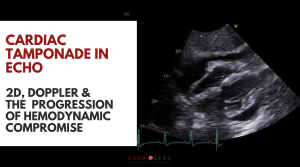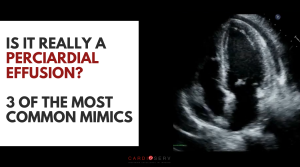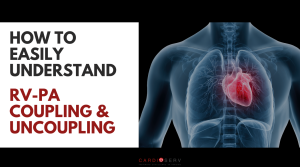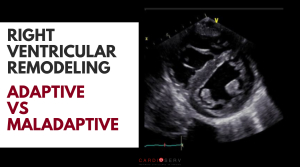Last Updated on October 31, 2025 by Don Gerig, RDCS
MODERATE TO SEVERE MITRAL REGURGITATION
There are elevated filling pressures if any of the following are true:
- Pulmonary venous AR duration minus mitral A-wave duration > 30 msec
- IVRT < 60 msec
- Average E/e’ > 14 (only in patients with reduced EF)
- IVRT/T E-e’ < 5.6 (only in patients with normal EF)
If average E/e’ is unobtainable or not used routinely in your lab, use “septal E/e’ >15” or “lateral E/e’ >13” to determine elevated filling pressures.
IVRT/T E-e’ refers to the isovolumic relaxation time divided by the time interval between the onset of mitral inflow and onset of mitral annular velocities. (Match R-R intervals)
MITRAL STENOSIS
There are elevated filling pressures if any of the following are true:
- IVRT < 60 msec
- Mitral A-wave velocity > 1.5 m/s
- IVRT/T E-e’ < 4.2
IVRT/T E-e’ refers to the isovolumic relaxation time divided by the time interval between the onset of mitral inflow and onset of mitral annular velocities. (Match R-R intervals)
SEVERE AORTIC INSUFFICIENCY
There is limited data regarding diastolic function and severe AI, however the presence of the following suggests increased filling pressures:
- LA Volume Index >34 mL/m²
- Average E/e’ > 14
- TR Peak Velocity > 2.8 m/s
If average E/e’ is unobtainable or not used routinely in your lab, use “septal E/e’ >15” or “lateral E/e’ >13” to determine elevated filling pressures.
PULMONARY HYPERTENSION
ASE mentions that pulmonary hypertension is caused by non-cardiac etiology if lateral E/e’ <8. However, it is caused by a cardiac etiology if lateral E/e’ > 13. Notice that there is no mention of septal e’ nor the average of both.
HEART TRANSPLANT
No single parameter is useful for determining diastolic dysfunction in this case. Some indicators, especially when combined, which may suggest elevated filling pressures in a transplant include:
- Systolic dysfunction
- Mitral inflow pattern ending before QRS complex (caused by elevated LVEDP)
- Diastolic mitral regurgitation (caused by elevated LVEDP)
- E/A Ratio > 2 (although it is important to note that a restrictive inflow pattern is typical of transplant patients)
- TR velocity > 2.8 m/s in absence of pulmonary disease
Lastly, some notable information mentioned by ASE pertains to:
- Cardiac causes of pulmonary hypertension
- Bundle branch block





